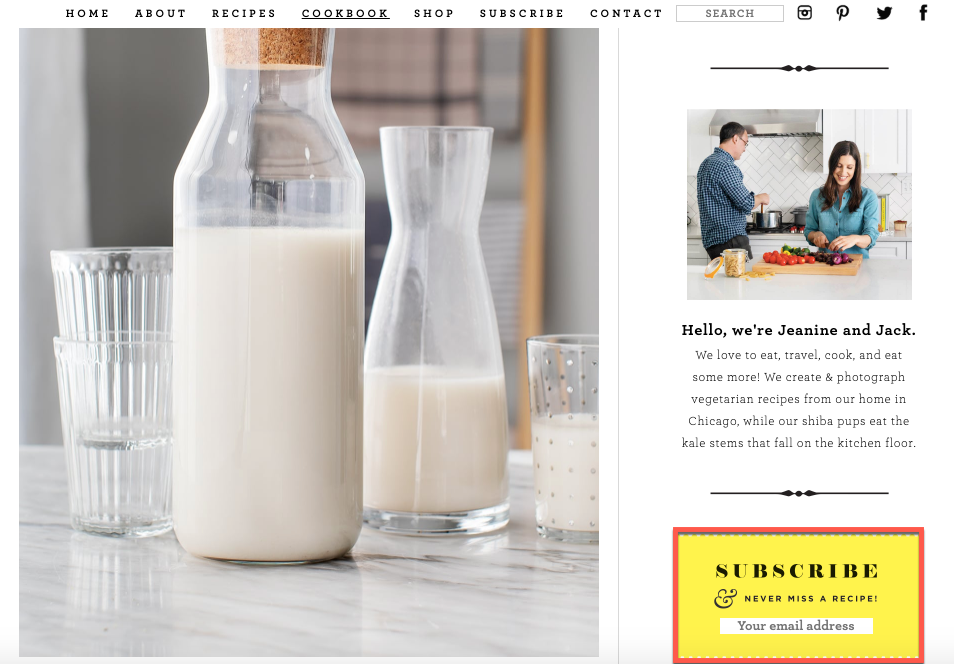The key steps to creating a profitable blog
Earning money from your own blog may seem like a far-fetched idea. But it’s not. You’ve surely stumbled upon at least a few stories of bloggers who started from scratch and later on managed to turn their blogs into a full-time career, making thousands of pounds a month.
Now, it does take passion, hard work and patience to create a profitable blog. It also takes more than just interesting, quality content to successfully grow your blog.
You’ll need to take the time to learn about and experiment with different tactics to attract readers, build a community of people that engages with your blog and recommends you to others. You’ll also need to find the most profitable ways to monetise your blog so that it generates a sizable income.
if you want to start your own side hustle with low-cost investment, follow these steps to learn how to create a profitable blog.
Step 1: Determine your unique selling point
If you want to create a profitable blog, you’ll need to look at it like a product or business. This means that the first step is to figure out what makes your blog different from the billions of existing blogs out there. What’s special about it? What exactly is going to help you to stand out from the crowd?
Don’t skip this critical first step as it’ll make the difference between yet another failed blog and a successful one that’ll attract heaps of readers.
Take some time to do your research to identify your unique selling point and how you’d like to position your blog in the blogosphere.
Start by thinking what you have to offer and what you want to be known for. For example, if you’re considering launching a cooking blog, why would someone come and read yours when there are millions of other established cooking blogs out there?
Maybe you want to share simple tips and recipes for people who hate cooking. Maybe you want to share quick tips and recipes for busy people who can only take 15 to 30 minutes out of their day for this activity. Or maybe you want to share interesting and delicious recipes for people who wish to lose weight but associate healthy food with boring food.
Whatever your unique selling point and niche, make sure you identify it before creating your blog as it’s what’ll help you to stand out from the crowd as you get started.
Step 2: Get your professional blog up and running
Starting a blog is cheap but that doesn’t mean you should skip on the essentials that’ll make it look professional and trustworthy.
If you want your blog to turn profit, we’d recommend ‘dressing’ it for success from the beginning. This means avoiding free blogging platforms where the options to get a good name, customise the look and feel of your blog, and monetise it are limited.
Instead, create a blog using a domain name you’ve chosen and bought and then get a template that you can easily customise and make your own.
In these posts you’ll find all the information you need about choosing a great but cheap domain name and web hosting package for your blog: Questions to ask before buying a domain name & How to decide which type of hosting you need for your blog or website.
If you’re setting up a new blog, then the easiest, most affordable choice is a WordPress hosting package, which comes with a free domain name and email.
Step 3: Create an opt in now, not later
Don’t wait until you reach a specific number of visitors to put a newsletter form on your blog. Do that now so you don’t miss out on the opportunity to build your email list early on.
If you think about it, it’s not impossible for that first, fifth or tenth visitor that lands on your blog to be impressed and want to receive more of your content and knowledge in their inbox. But if you don’t give visitors an easy way to subscribe to your blog, you’ll miss out on the opportunity to keep in touch with them and entice them to come back to your blog whenever you publish new content.

In addition, creating an opt in is easy and it’ll give you the fantastic opportunity to engage with your audience, build authority and trust. Read this guide for some useful tips on how to build your first email list and get started with email marketing.
Step 4: Optimise every blog post for user intent
Optimising content for user intent is one of the online marketing tactics that any blogger and small business owner should prioritise.
So if you want readers to quickly find your blog at the top of the search engine results, you’ll need to make sure that the content and information you share is exactly what your readers want, and not what you believe they’d find interesting.
What is user intent? It’s the “why” or the ultimate goal of the user who’s running a search on Google.
For example, two users running a search for “learn French” may have different intents. One of them may be looking for free advice on how to get started learning French while the other one may be researching best tutors to hire to help them to learn French.
The user intent is different and you’ll need to do some keyword research to determine what exactly your users’ intent is. Then you can create relevant content that matches their intent.
Understanding what your audience wants and the type of information that they’re looking for is critical to your blog’s success. It’s how you’ll achieve a higher position in the search engine results page, and also how you’ll attract and retain a greater number of loyal readers over time.
Here’s an in-depth post where you can learn more about user intent and how to master it to improve your blog’s visibility in the search engine results.
Step 5: Promote it
Just as writing is critical to keeping your blog alive, so is promoting it. Because no matter how passionate you are about your topic of choice, and no matter how entertaining or insightful your articles are, if your blog is like a ghost town, you’ll soon lose the motivation to keep going.
There are lots of ways to spread the word about your blog and attract more readers, including:
- Being active and promoting your articles on social networks like Facebook, Twitter, Instagram and Pinterest
- Sharing your content and/ or answering questions in forums or groups
- Guest posting on relevant, authority blogs
- Writing insightful comments on popular blogs
- Optimising your posts and images for search engines
You can learn more about each of these tactics in this post that covers ten amazing ways to promote your blog and get more readers.
Step 6: Monetise your blog
The next step is to monetise your blog. So what options do you have to make money from your blog? The answer to that question depends on a number of factors including what your blog is about, what you’re good at and what you feel comfortable doing.
Here are a few of the most popular ways to generate revenue from a blog:
- Get ads on your blog
- Sign up for an affiliate marketing scheme
- Write product reviews
- Write sponsored posts
- Sell your services as a blogger
- Launch a product
- Ask for donations
Read this post to learn more about these tactics to make money from your blog, along with the benefits and drawbacks of each particular method.
Wrapping up
There’s no doubt that creating and growing a successful blog that earns you money takes time and effort. But if you follow these steps and strive to learn what your readers want to find on your blog, then the reality of becoming the owner of a profitable blog will be within reach.

